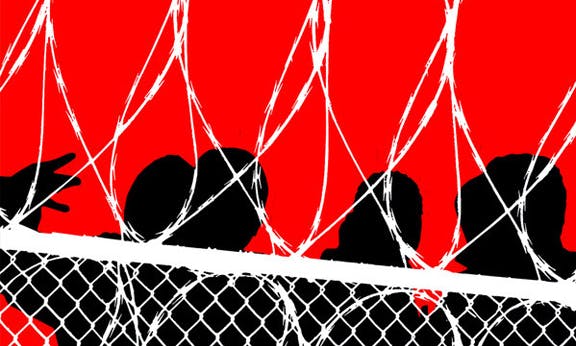Crime scenes: Aboriginal deaths in custody continue

There are few facts more damning than 407 Aboriginal and Torres Strait Islander deaths in custody since the end of the Royal Commission into Aboriginal Deaths in Custody in 1991.
Except, perhaps, that the figures are hard to find.
Among the 339 largely-ignored recommendations of the royal commission was the need for accurate information so the scale of the systemic racism within the so-called justice system could never be hidden from public view.
Yet when Guardian journalists went looking for the information three years ago, they could not find comprehensive, up-to-date figures. This was despite the Australian Institute of Criminology collecting them since 1992. The most recent figures, issued in April 2018, end in June 2015.
So the journalists compiled coronial findings and tracked media reports and press releases from relevant agencies. They also searched social media, “because most prison services in Australia will only confirm a death in custody when asked to verify a report; they do not issue a media statement unprompted”, they noted. “It is likely that we are missing some cases from more recent years.”
The resulting comprehensive database, “Deaths Inside”, tracks every known Indigenous death in custody in every jurisdiction from 2008-18 in detail.
The database is an invaluable resource. But it is a disgrace that it has been up to the Guardian to produce it. It is another indication, first among which is that the killing continues, of the disregard with which Aboriginal lives are held by the Australian state.
At less than 3 percent of the Australian population, Indigenous adults are 13 times more likely to be incarcerated than non-Indigenous people; juveniles are 24 times more likely. The fastest-growing prison population is Indigenous women.
The database contains much more than just the shameful numbers. With the help of their families, the stories of the dead are told.
A majority (56 percent) of the people who have died in custody since 2008 were not formally under arrest, had not been charged with a crime or had been charged but not convicted. This includes those killed in a police pursuit or during arrest, or who died in protective custody.
People like Wayne Fella Morrison, who died after being involved in an “altercation” with at least five guards while on remand at Yatala prison in South Australia in 2016. His family received no formal notification that he had been injured and were denied entry to the hospital for more than 10 hours.
The report gives no ground to the idea that the deaths of those who have been convicted of a crime are any less worthy of investigation and condemnation.
Among the deaths are Aboriginal people allowed to die for lack of medical attention. Aboriginal people are twice as likely as non-Aboriginal people not to receive all the medical care they require. The case of Ms Dhu in Western Australia, whose life ebbed away as her requests for medical assistance were laughed at (she was in custody for unpaid parking fines) is one of the few deaths to receive public attention for this common racist disregard.
As the Guardian journalists note: “We read stories of people complaining of excruciating pain but receiving no painkillers, of gravely sick people complaining of the symptoms of septic shock and being treated for dehydration, of families having to watch their loved one being shackled to a hospital bed despite, on many occasions, being in a coma or reliant on machines to breathe.”
Aboriginal people must be sick of the phrase “adding insult to injury”. It could have been invented to describe their treatment at the hands of the state. After people have died in custody, the insults are never ending: the smearing of the deceased person, the lack of information or outright lies to their families, that inquests take years to occur, and can then be dragged out for years more, as is happening with the one into the death in Long Bay jail in 2015 of David Dungay Jr.
All this is designed to destroy the families or at least destroy their will. If there is a bright spot in all this awfulness, it is the resistance of the families. The “Deaths Inside” database is a tribute to their resilience as much as it is a record of racist horror.